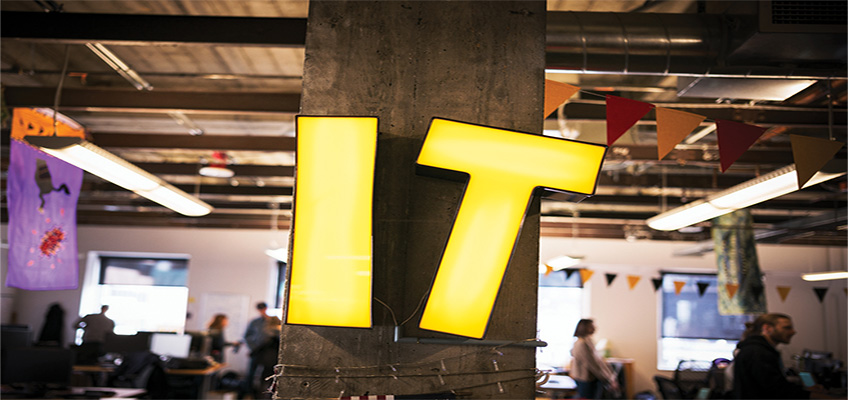Each day the IT help desk for Catholic Schools NSW would brace itself for up to 50 calls a day from teachers, school administrators and staff seeking help with often straightforward issues such as username reminders or password resets.
It wasn’t exactly challenging work – but it did take time out of the day that could be better spent on other more complex value-adding tasks.
Enter Serena.
Serena is a chatbot, developed to offer first line support to CSNSW’s 11,000-strong user-base spread across almost 600 schools and free up the IT help desk. It took just two days to get Serena built and into action, which halved the log-in related problems that the help desk needed to handle, reducing overall support costs.
Alex Dean chief technology officer of CSNSW explains; “We noticed a lot of questions were coming into the helpdesk that a bot could handle. The bigger picture over the long run, was to design a bot or a range of bots that could become interactive help systems for users of various online applications that Catholic Schools are providing to their stakeholders maximising the resources we have internally and reducing the time spent on frequent support calls. It would also improve the user experience for the stakeholders.”
How did you build Serena?
AD: In the past infrastructure was very much on premise. The bot became one of the first moves into the Azure fabric for this organisation, to start leveraging cloud computing and to start leveraging online tools and services.
It was shockingly easy to build the first version of the bot. We partnered with Clade to build the first iteration of the bot, using the knowledge base that we had derived from going through emails that had been coming in on a frequent basis.
That really showed us the frequent questions that could be answered. The next phase was making the bot more interactive around specific tasks or specific problems that users are having, building workflows into the bots to help them reset the passwords for example, which is in the next stage. But, to get started, to start seeing the first instant results was shockingly fast.
What has the impact of this been so far?
AD: Users have now got a new channel to be able to resolve some of the login problems. And, a decrease in requests coming to CSNSW for password change requests and user login requests. One of the goals is to reduce the amount of users that create multiple accounts, because they can’t remember which account they had previously. So, there’s a range of data quality and problem solving tackled in the same process.
It’s also freed up valuable resources to focus on more strategic support tasks.
What else are you moving to Azure?
AD: We’ve now starting running testing environments for business applications in Azure, and to speed up deployment processes. The next stage of our life cycle’s now effectively migrating our infrastructure into Azure.
So far, we’ve been very much platform as a service, and the function apps and bots and web apps. Now we’re going infrastructure and service with hosting web machines and virtual networks. Our aim is to move our entire data centre in Azure.
How did you look at the market when selecting a cloud provider?
AD: One of the good features of Azure has been that we have been able to make this change very transparent to the user, and not had to ask them to change the way they work or behave.
Another reason for using Azure as the platform for the bot instead of let’s say, IBM Watson or one of the other chatbot platforms that have been cropping up left, right and centre, is to do with the speed of being able to get it up and running. That was a major driving force. Also being able to own the solution and customise it, thanks to the flexible user interface.
And, then yes, also knowing that the Azure platform is growing at such a pace, and with new capabilities and new services being added virtually on monthly basis, that we knew that this is a platform for the future.
Going with some of the other vendors, we would have been rather boxed in around potentially only the chatbot capabilities or boxed in with a limited set of features and waiting for new features to be released. With Azure, we know it’s very much plug and play.
What’s next on the innovation agenda for CSNSW?
AD: At the beginning of the year, we introduced a new role – chief data officer. The organisation’s now digging deeper into analysing the vast amount of data available to us; starting to use things like machine learning and learning algorithms to be able to detect patterns in order to automate certain tasks within the organisation around reporting on that data.
Azure is helping us. We’ve already started with the data catalogue capabilities in Azure to start cataloguing all of the different data sources. And, we’re increasing our Power BI footprint around reporting on all of the data that we have by providing dashboards to other stakeholders.
The future’s bright when it comes to all the things that Azure could be providing this organisation, and I’m sure there’s going to be new services and features that we’ll be able to leverage in the near future to improve how we operate.







